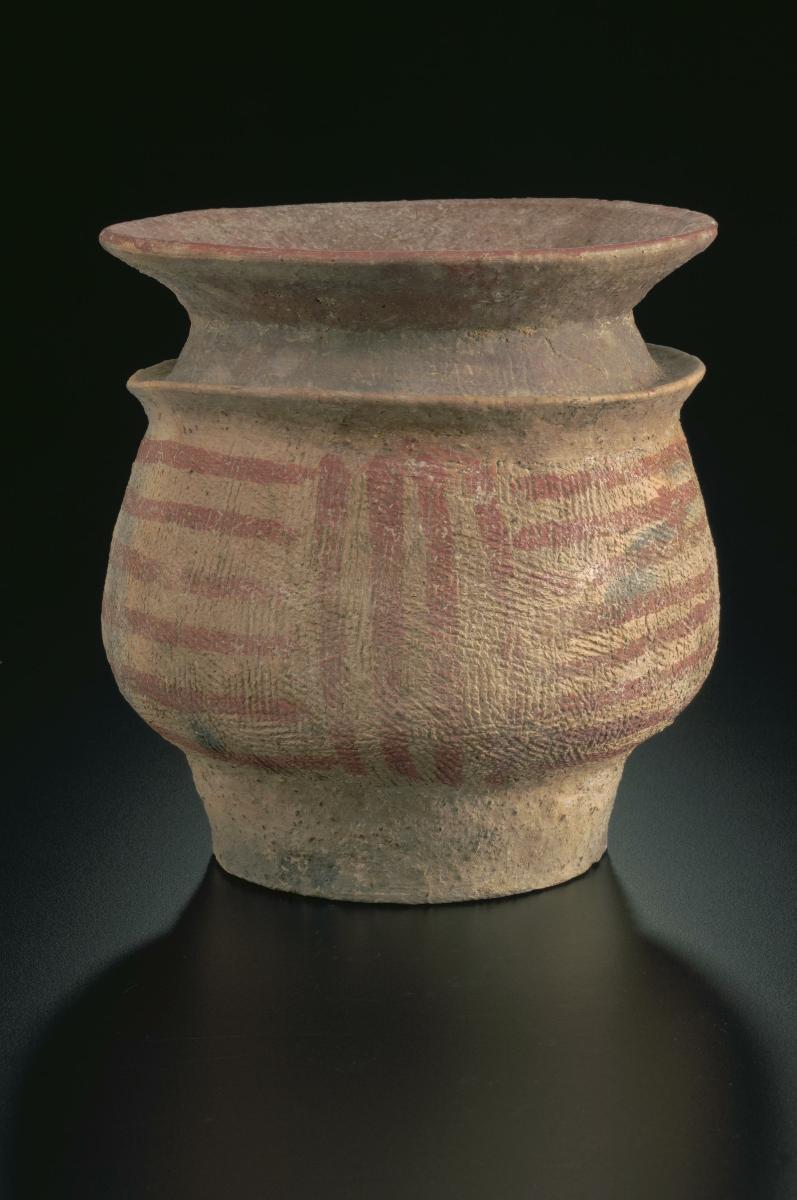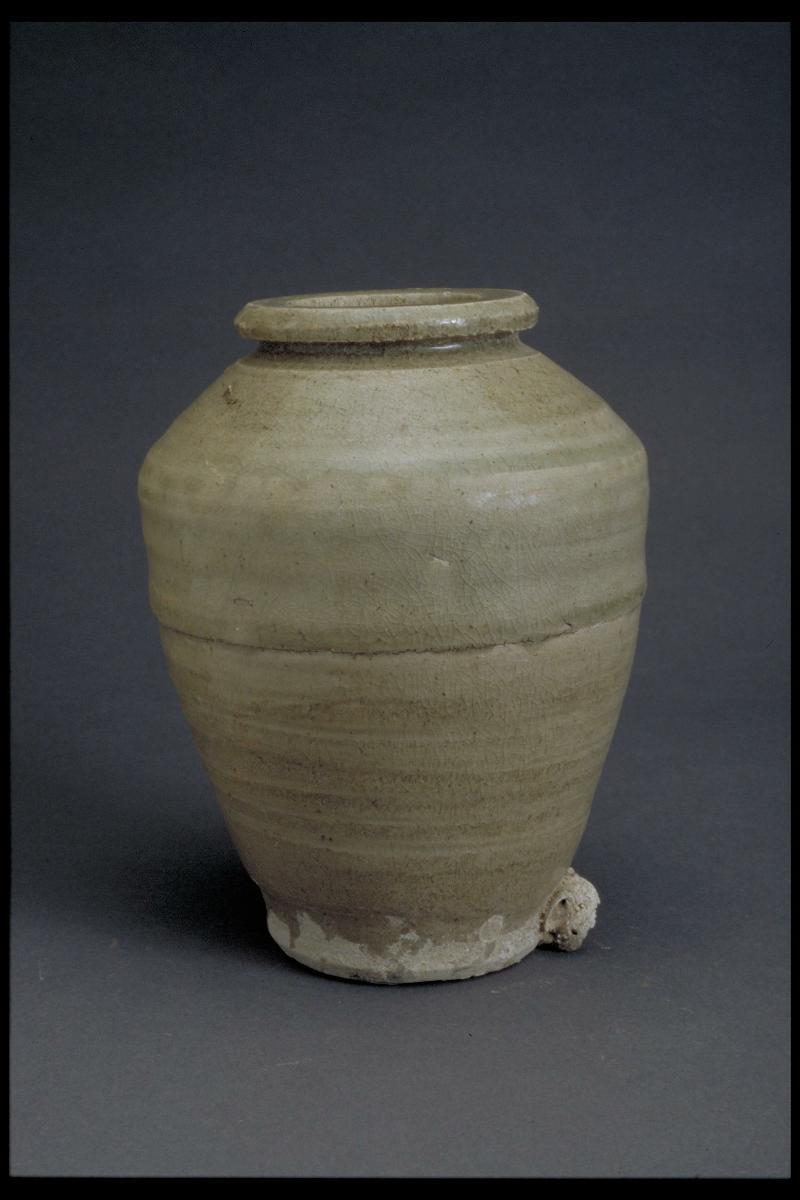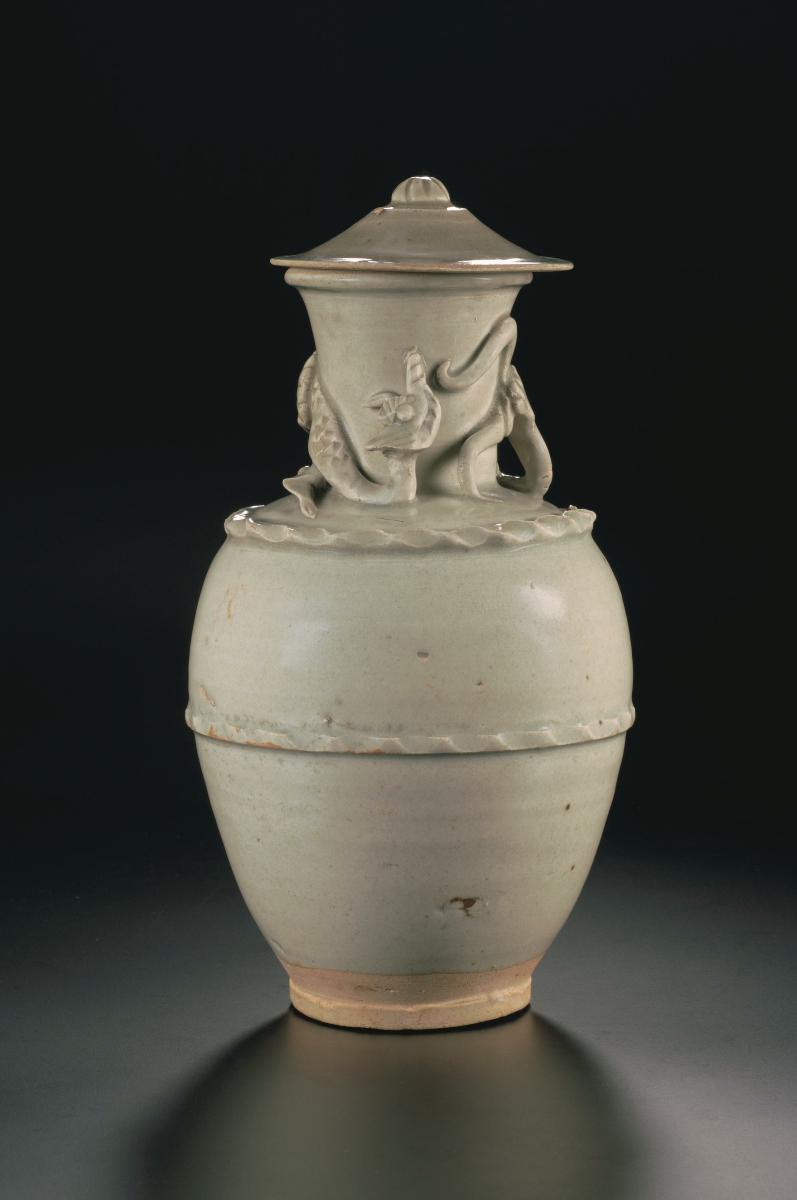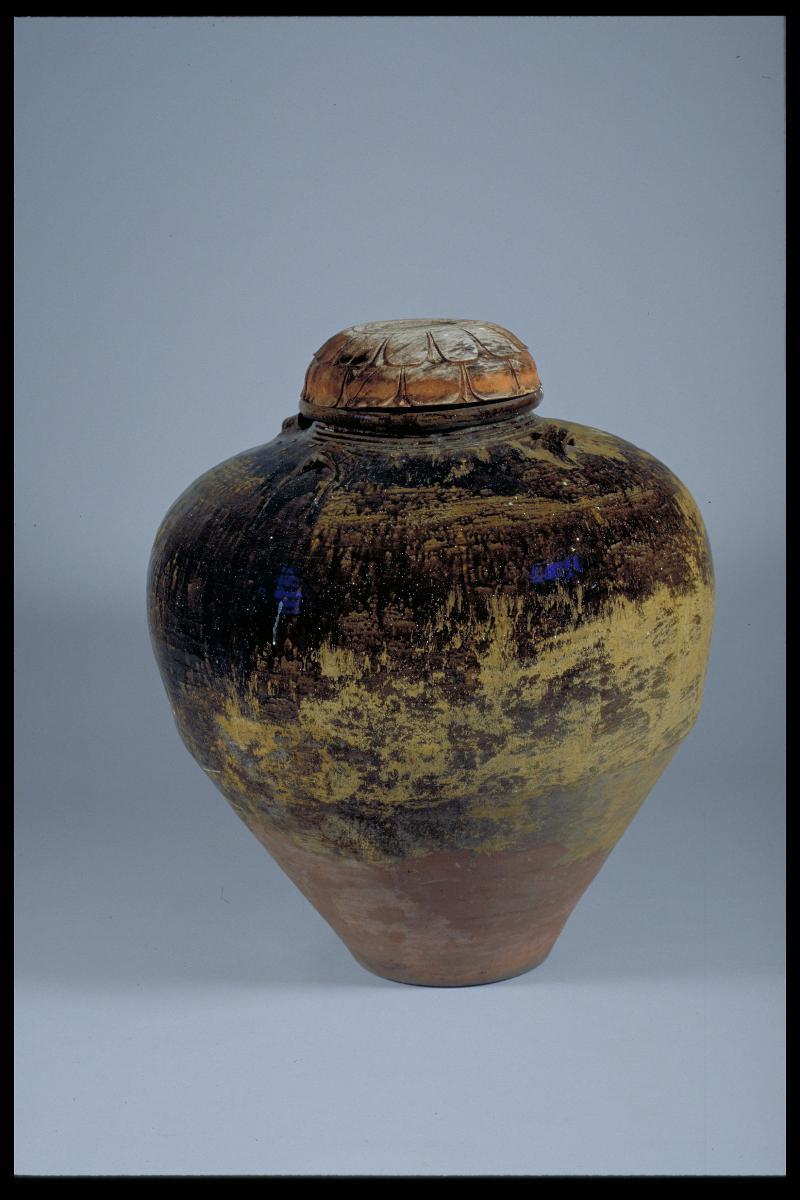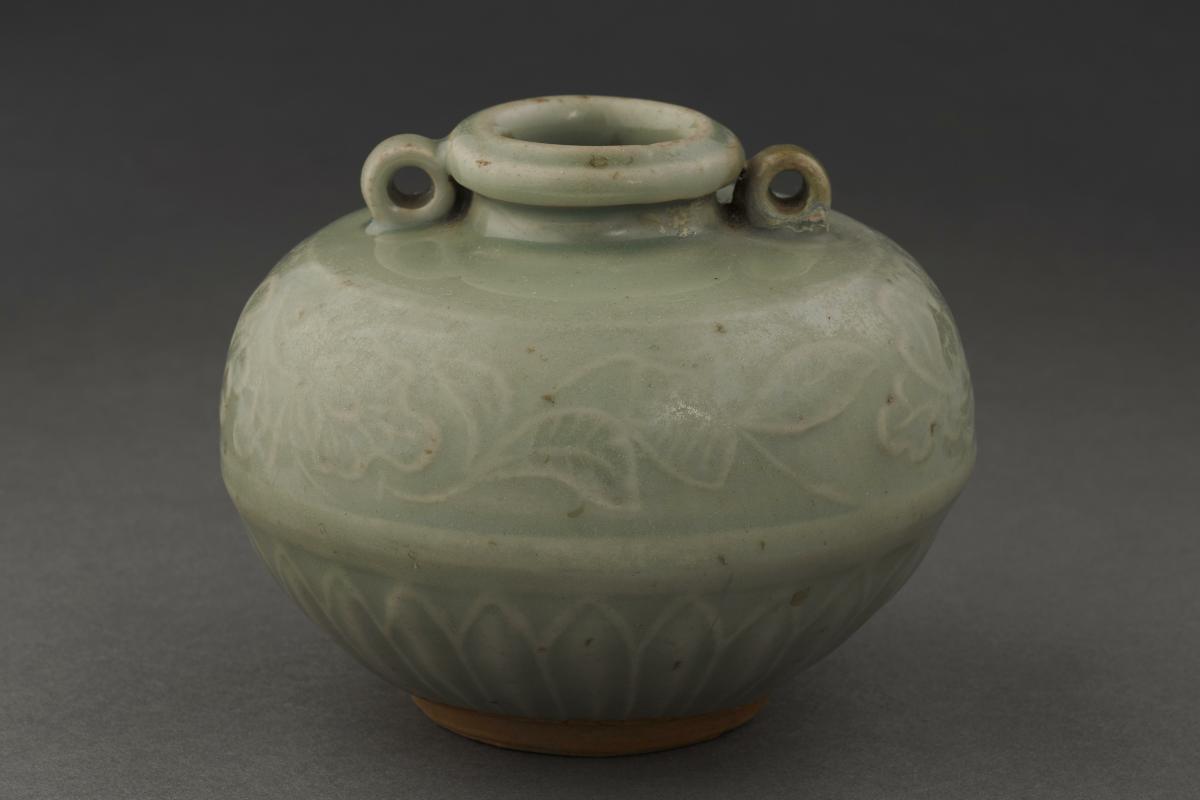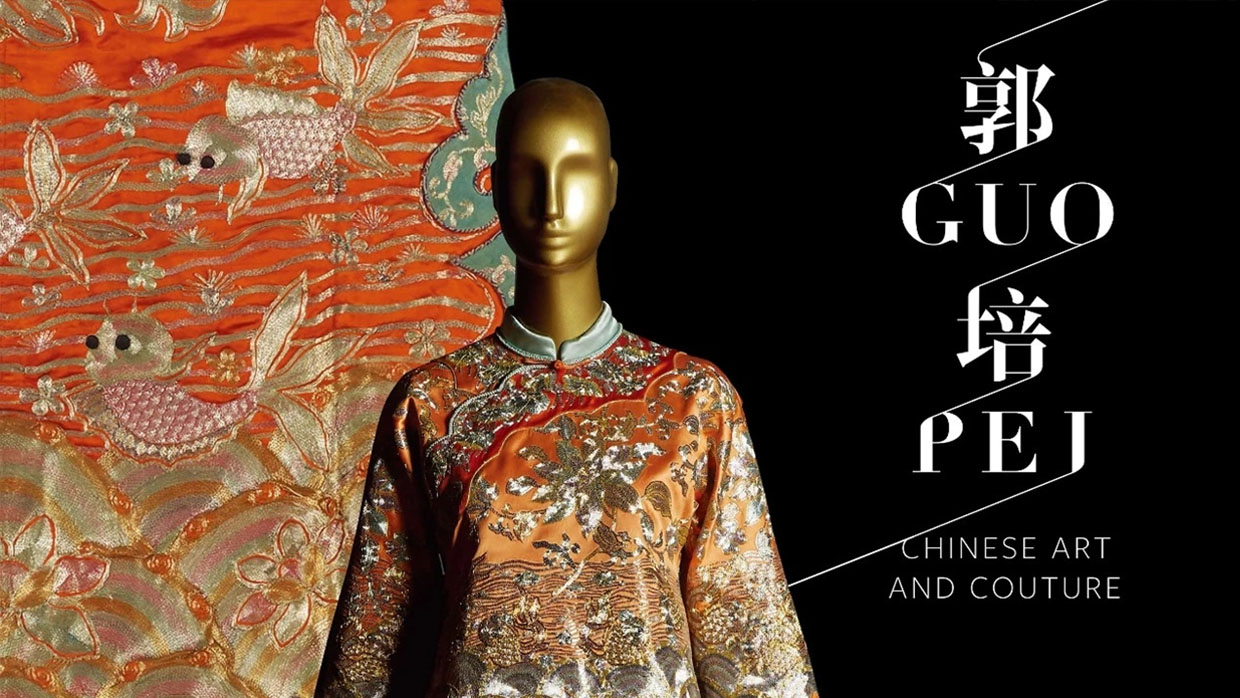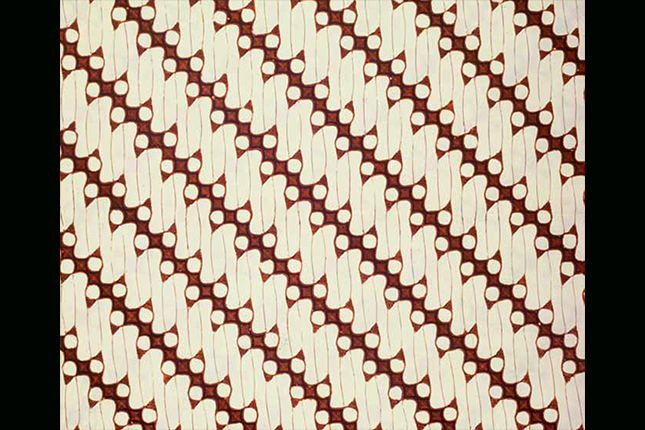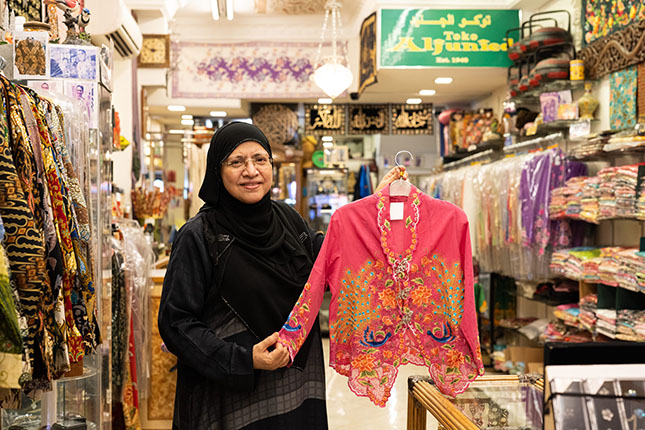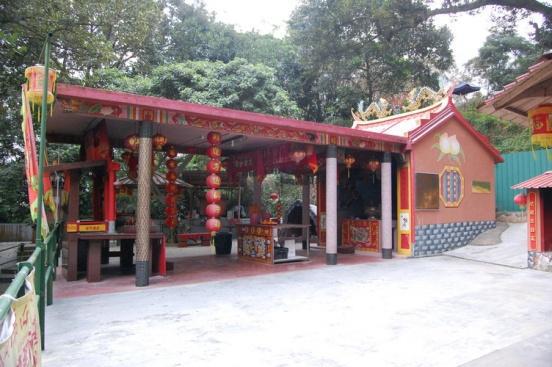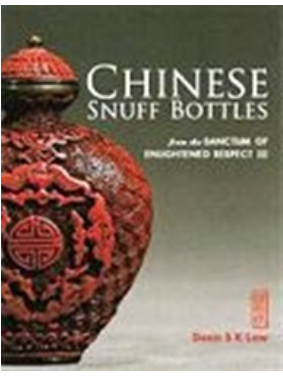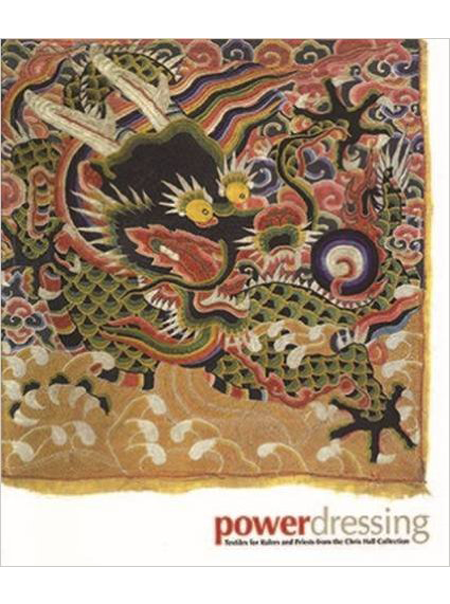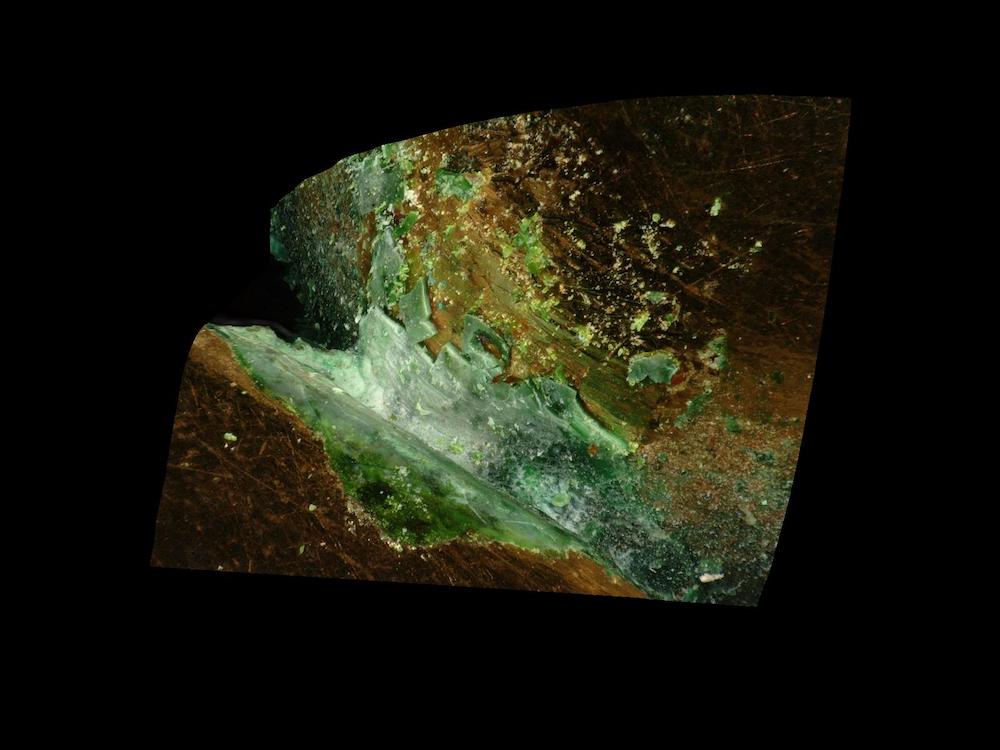This white and red pot has a red slip (liquid clay) linear design and a double mouth rim. The rounded end of the lower body is decorated with cord-marking.The site of Ban Chiang was first discovered in 1957. Pottery was found with skeletal remains, glass beads as well as iron and bronze bracelets. Recent dating methods suggest that there were three main phases of pottery-making in this culture. The Middle Period funerary ceramics consisted mostly of globular or ridged forms with thick, red-painted rims. Painted vessels such as this were probably not used as everyday ware in the Ban Chiang culture. These vessels were probably used as burial jars to contain either food or objects for the decesaed in their afterlife.




